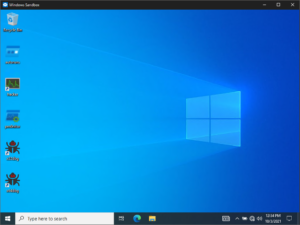I was writing some Python code that uses [ctypes][] for interfacing with the [Windows ToolHelp API](https://docs.microsoft.com/en-us/windows/win32/api/_toolhelp/). Specifically, I had to [define a Python equivalent][structs] for the [PROCESSENTRY32](https://docs.microsoft.com/en-us/windows/win32/api/tlhelp32/ns-tlhelp32-processentry32) struct. Now, the [ctypes][] [struct definitions][structs] are a little annoying because they do not give you type hints. You can add the type hints _on top_ of the
_fields_ attribute but that looks a little silly because you _literally_ [write everything twice][wet]. In Python 3.7+ ((Starting in Python 3.7, dictionaries keep the insertion order.)), you can solve this using a metaclass, and one stigma of metaclasses is that they have very few applications, so I decided to blog about this one:
class FieldsFromTypeHints(type(ctypes.Structure)):
def __new__(cls, name, bases, namespace):
from typing import get_type_hints
class AnnotationDummy:
__annotations__ = namespace.get('__annotations__', {})
annotations = get_type_hints(AnnotationDummy)
namespace['_fields_'] = list(annotations.items())
return type(ctypes.Structure).__new__(cls, name, bases, namespace)
and now you can write:
class PROCESSENTRY32(ctypes.Structure, metaclass=FieldsFromTypeHints):
dwSize : ctypes.c_uint32
cntUsage : ctypes.c_uint32
th32ProcessID : ctypes.c_uint32
th32DefaultHeapID : ctypes.POINTER(ctypes.c_ulong)
th32ModuleID : ctypes.c_uint32
cntThreads : ctypes.c_uint32
th32ParentProcessID : ctypes.c_uint32
pcPriClassBase : ctypes.c_long
dwFlags : ctypes.c_uint32
szExeFile : ctypes.c_char * 260
The metaclass simply deduces the
_fields_ attribute of the new class for you before the class is _even created_. It might make sense to think of metaclasses as "class creation hooks", i.e. you get to modify what you have written before the class is actually being defined. The following bit is just to be compatible with [PEP-563](https://www.python.org/dev/peps/pep-0563/):
from typing import get_type_hints
class AnnotationDummy:
__annotations__ = namespace.get('__annotations__', {})
annotations = get_type_hints(AnnotationDummy)
And then, the following is the actual magic line:
namespace['_fields_'] = list(annotations.items())
This adds the attribute
_fields_ before the class is created.
[ctypes]: https://docs.python.org/3/library/ctypes.html
[structs]: https://docs.python.org/3/library/ctypes.html#structures-and-unions
[wet]: https://en.wikipedia.org/wiki/Don%27t_repeat_yourself
Do you want to know what I was coding?
